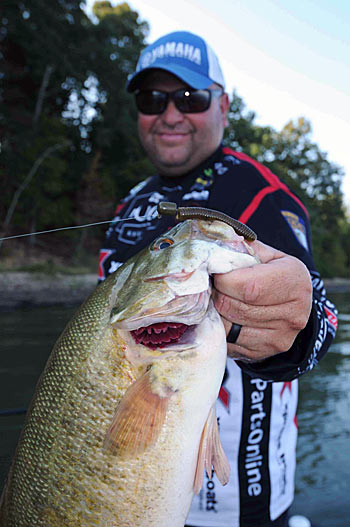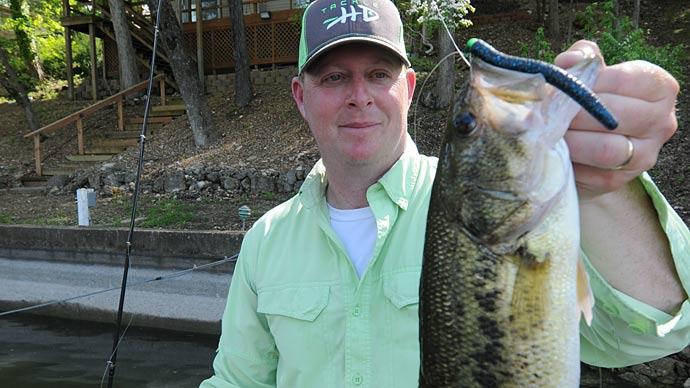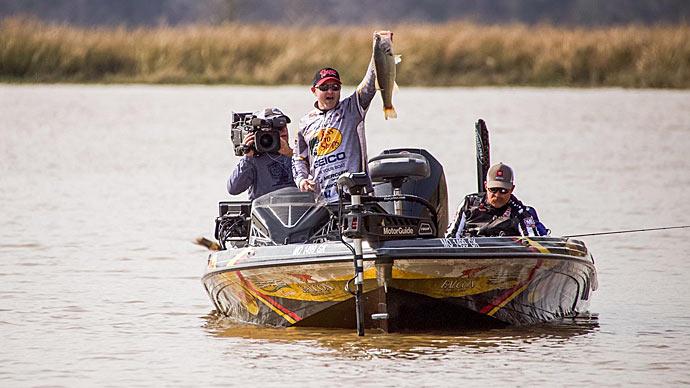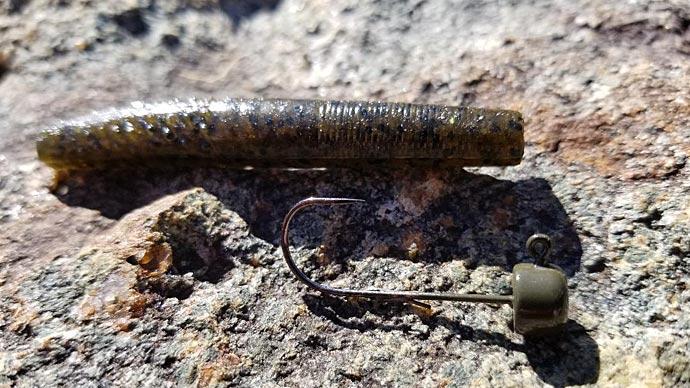
Bill Lowen knew he was in trouble that afternoon on Day One of the Bassmaster Elite Series at the St. Lawrence River.
It was 1 o’clock, and Lowen had only three keepers weighing about 6 pounds in his livewell with a 3 p.m. check-in time creeping up on him. “I was saying to myself that I cannot believe I am going to weigh in three fish on the St. Lawrence River,” Lowen recalls. St. Lawrence River tournaments are usually smallmouth slugfests, so Lowen knew if he had less than 20 pounds in his livewell, he might as well not even weigh in his fish that day.
“I could see the fish on the graph, and I was dropping everything I could drop on them to try and catch one, but I could not get one to bite,” he says. After contemplating his options, Lowen decided to tie on a Ned rig with a 5/16-ounce jighead and a shortened Strike King Zero Worm. The first time he dropped the rig to the smallmouth he saw on the graph, he immediately caught a fish. “For every fish I dropped that bait on the next hour, I would catch them.” He culled out the three keepers he had previously in the livewell and finished the day with a 19-pound, 15-ounce limit. The next day Lowen relied on other lures to catch a limit, but on the final day, he caught all of his limit, weighing 21 pounds, 8 ounces (his biggest limit of the tournament) on the Ned rig to finish 29th with a three-day total of 61-01.
The Ned rig is a small stickworm or pinched-off piece of a longer stickworm on a small jighead that just flat out catches bass. “It is just one of those baits that gets a lot of bites,” Lowen says. “I consider it a simple bait to fish. So with the fact that it is simple to fish and gets a lot of bites, it is kind of one of those deals that you almost have to have in your arsenal.”
The Indiana pro mainly employs the Ned rig to catch smallmouth bass but has occasionally used it to trick largemouth and spotted bass. He likes to work the lure mainly in open water around isolated rocks, weed edges, seawalls, break walls, bridge culverts and pilings, roadbeds, and clean gravel bottoms.
A stickworm jighead he helped design for Lure Parts Online is Lowen’s choice for setting up his Ned rig. He favors a 3/32- or 5/32-ounce jighead for casting to the shallows (10 feet deep or less) but switches to 1/4- or 5/16-ounce models for fishing in deeper water or for vertical presentations to bass he sees on his electronics. “I fish it anywhere from a foot deep to 30 feet just kind of depending on what all is going on,” Lowen says.

Some lure companies manufacture a small stickworm especially designed for Ned rigs, but Lowen prefers setting up his rig with a 5-inch Strike King 3X ElazTech Zero Worm that he pinches in half. Lowen favors the shortened Zero for his Ned rig because he notices the ElazTech gel compound causes the worm to “float up a bit” when attached to the jighead, so the lure stands up off the bottom. Since he hopes to mimic a crawfish or goby with his Ned rig, Lowen selects Zero worms in green pumpkin or black-and-blue hues.
A simple retrieve produces the best for Lowen when he presents his Ned rig. “A lot of times, the fish eat that bait on the fall,” says Lowen, who shuns imparting a lot of action into his rig. “I think that’s why that bait gets so many bites because it is so subtle and does not have a lot of action.”
The Bassmaster Elite Series pro likes to cast the Ned rig to smallmouth he sees cruising the shallows and lets the lure fall to the bottom. “When it gets to the bottom, I don’t do anything at all to it, and 90 percent of the time, those smallmouth swim right over there and eat it,” Lowen says. He has noticed that if he started hopping the lure in front of the smallmouth, the fish would turn away from it.
If the fish fails to bite the rig on the initial fall, Lowen lets it sit on the bottom for various lengths (sometimes 5 to 20 seconds). If a bass continues to ignore his offering, Lowen hops the rig once and then lets it sit again. He notices all his bites on the rig usually occur when the lure falls or sits still. According to Lowen, working the lure too much is the biggest mistake an angler can make when fishing the Ned rig.
Lowen’s Ned rig tackle consists of a 7-foot medium-heavy spinning rod and a Lew’s spinning reel with a 2000 Series spool. He ties the rig on an 8- to 10-foot leader of 8-pound Hi-Seas Grand Slam Fluorocarbon attached to a main line of 10- or 15-pound Hi-Seas Grand Slam Braid.
The rig produces best for Lowen any time the weather is calm and the water surface is slick-- especially on high-pressure days with bluebird skies when the bite is tough. The nine-time Bassmaster Classic qualifier avoids throwing the lure on windy days because he has difficulty feeling the lightweight rig in the wind.
The ability to fish the Ned rig deep or shallow with various size jigheads also makes the rig an ideal lure to throw any time of the year, Lowen suggests.
“I catch a lot of fish on it, and I also catch a lot of big fish on it,” Lowen says. “I don’t think I have ever caught a 6-pounder on it, but I have caught a lot of those 4- to 5-pound class fish, just really quality fish.”
BassResource may receive a portion of revenues if you make a purchase using a link above.




